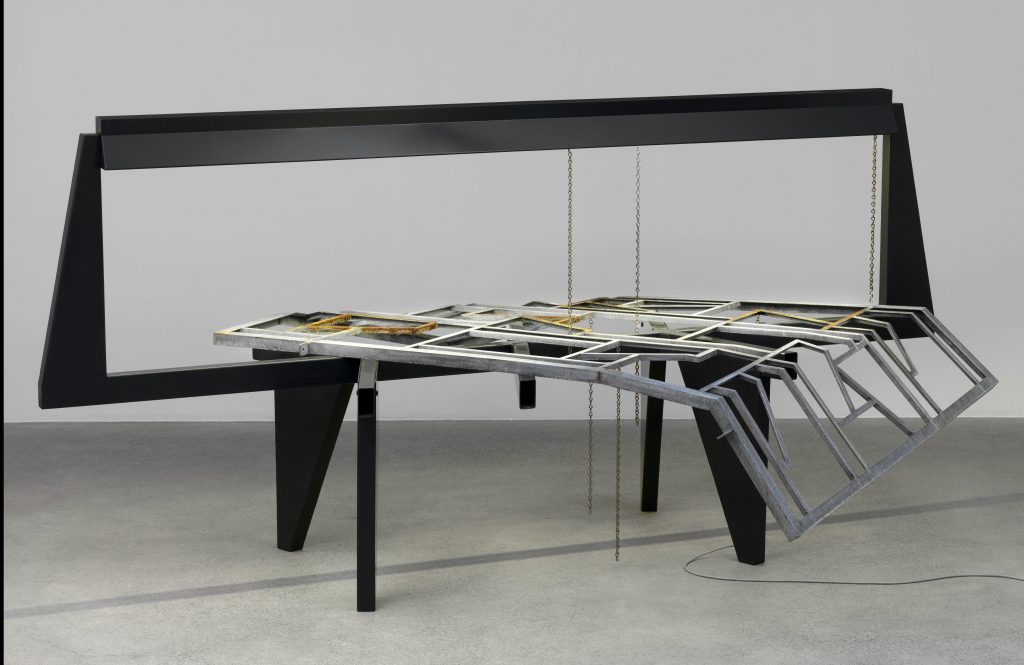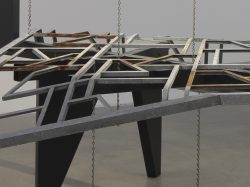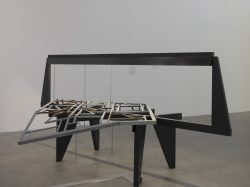


Click the button below and fill out the form with your details. Our team will get in touch with you to give you all the information you are looking for.
Request Data Sheet Project MartaOpen (The End) is an artwork that was designed for an exhibition organized at the Eva Presenhuber gallery in Zurich in 2010, entitled “A Library of Leaves”. The exhibition was focused on reading, and consequently Boyce – who has always been interested in the history of design and in producing specific series of objects – has created an artwork based on the famous library table designed by Jean Prouvé in 1953 for the Maison de l ‘Etudiant in Paris.
This artwork consists of a metal grid in galvanized steel, supported by chains to a black painted steel support, the whole surmounted by a neon light and having a size of 152.5 x 319 x 251 cm.
The table that Boyce realised is designed both as an object on which read and as an object to be read, in fact the support surface resembles a page of a book, folded as if it were to be browsed. Even the letters O – P – E – N that can be read along the rusty edges of the railings seem an invitation to enter into a story. And the title of the work also reports the last words of a book, The End.
Excerpts from the technical interview with Martin Boyce:
“I am interested in the history of design, this includes the engineering and manufacturing of objects as well as the arrangement and formal presence of things. I am as interested in the un-authored design objects such as park benches as I am in the design classics. Since 1997 my sculptures have only referred directly to a small handful of specific design objects. The Eames Storage Units, Jacobsen series 7 chairs, Prouve tables, screens and benches.”
“I use whatever materials are relevant to the piece I am making. I do however tend to stick to a small palette of materials such as wood, steel, and Jesmonite. More recently I have been casting some elements in bronze. [. ..] the materials used are discussed with the fabrication workshop to examine there functional and aesthetic properties. New materials such as Jesmonite are tested in the studio / workshop so that we can understand their suitability for a work. However this is always an ongoing learning process as works travel and are reshow over time.”
“I often artificially accelerate the wear on my sculptures. I see it as implanting a past into an object that it didn’t I fact have. This creates a temporal instability that is interesting to me. An object that appears to be historical and abandoned that has in fact only just been made.”
“It can be frustrating to have to repair a work that was made years earlier because you are so busy with new work. I recently had to repair a wooden mask piece that had been broken. It had to be reassembled and completely repainted as I couldn’t match the original paint. It took a great deal of time which was frustrating but in the end it create a new relationship with the work that was somehow valuable.”
The interview was carried out within the project Interview with art, by Benedetta Bodo Albaretto in collaboration with the Center of Conservation and Restoration of Venaria Reale and the Fondazione Sandretto Re Rebaudengo, Turin.

